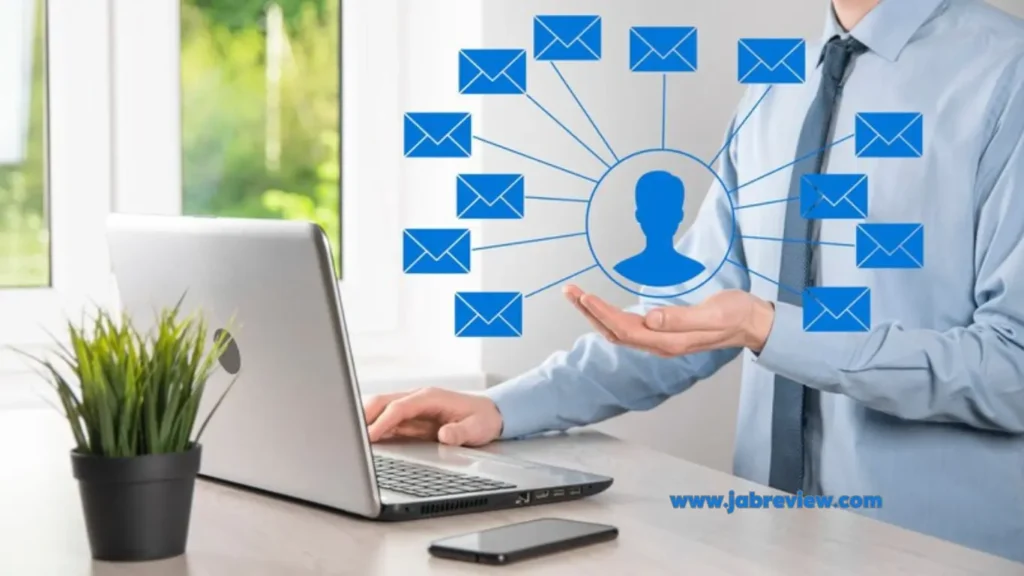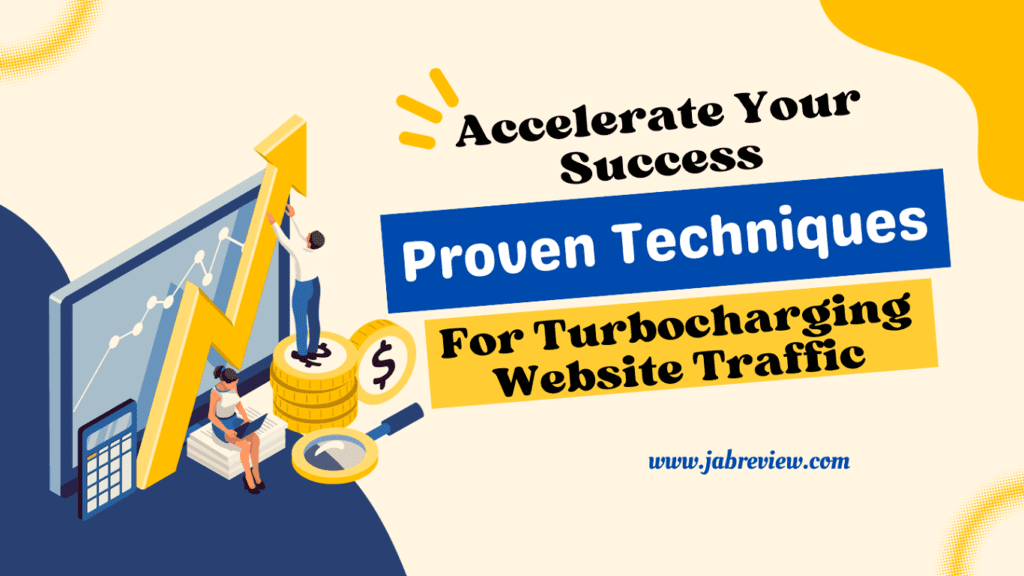Email marketing funnels are essential for turning subscribers into customers. They guide potential clients through a series of targeted emails towards conversion.
Crafting an effective email marketing funnel involves understanding your audience and nurturing leads with well-timed, relevant content. By segmenting your email list and delivering personalized messages at various stages of the customer journey, you increase the likelihood of engagement and conversions.
This guide will explore the art of creating successful email marketing funnels that not only capture leads but also foster long-term relationships, ultimately boosting your conversion rates. Dive into the nuances of email strategy as we outline the steps to construct a funnel that aligns with your business goals and resonates with your audience, ensuring that every email is a step towards success.

>> My Best Recommended & Proven Way to Earn $100 Daily at NO COST – Watch THIS FREE Training Video to Get Started >>
The Foundation Of Email Marketing Funnels
Email marketing funnels are crucial to turning subscribers into customers. These funnels guide potential customers through a journey. From first hearing about your brand to making a purchase, each step is important. Good funnels bring more sales and help to build strong customer relationships. Let’s dive into the core aspects that make these funnels work.
Building Subscriber Lists With Quality Leads
To start, you need people to email. Not just anyone, but interested individuals. These are your leads. Effective funnels always have a strong foundation, and building a subscriber list is the first block. This process ensures a higher chance of success in later stages.
- Offer value – Give something in exchange for an email. This could be an e-book, a discount code, or insightful tips.
- Optimize sign-up forms – Place these on your website where visitors can easily find them. Make sure they are simple and quick to fill out.
- Use social media – Promote your newsletter and offer incentives for joining your list on platforms like Facebook and Instagram.
Crafting Compelling Email Content
Once you have leads, you must keep them interested. This is where engaging content comes into play. Your emails should be more than just promotions. They need to resonate with the readers, providing them with valuable information that keeps them wanting more. Here are tips for crafting content that converts:
- Personalize emails – Use the subscriber’s name and tailor content based on their interests.
- Use a friendly tone – Write as if speaking to a friend. This builds trust and relaxes the reader.
- Include a clear call-to-action – Tell readers exactly what you want them to do next. Make it stand out.
Anatomy Of An Effective Email
The power of email marketing hinges on crafting messages that resonate with recipients. Understanding the ‘Anatomy of an Effective Email’ is crucial. It’s like building a car, each part must work flawlessly for the whole to run smoothly. Let’s explore the key components of an engaging email that can nurture leads and boost conversions.
Key Components Of Email Structure
An effective email combines multiple elements that work together. The structure includes:
- Header – Usually contains the logo or brand name. It’s the first thing recipients see.
- Greeting – Personalized if possible, creates a connection with the reader.
- Body Content – The core message with persuasive, engaging, and informative text.
- Visuals – Relevant images or graphics to supplement the message and engage readers.
- Call-to-Action (CTA) – Encourages readers to take the next step with clear instructions.
- Footer – Provides extra information like contact details, and legal information.
Writing Subject Lines That Get Clicked
The subject line is the doorway to your email. It determines whether your email gets opened or ignored. Crafting clickable subject lines involves:
| Tip | Explanation |
|---|---|
| Keep It Short | Limits vary, but under 50 characters is ideal for clarity and mobile viewing. |
| Use Numbers & Lists | They stand out and set clear expectations for the reader. |
| Ask Questions | Questions engage and pique curiosity, prompting the reader to seek answers inside. |
| Personalization | Using the recipient’s name or location makes the email feel more tailored and relevant. |
| Urgency or Scarcity | Creating a sense of urgency can encourage immediate action. |
| Preview Text | Use it as an extension of your subject line to pull readers in. |
>> My Best Recommended & Proven Way to Earn $100 Daily at NO COST – Watch THIS FREE Training Video to Get Started >>
Segmentation Strategies For Personalization
Email marketing is not a one-size-fits-all solution. To effectively convert leads into customers, personalization through segmentation is key. By understanding subscriber behavior and tailoring messages for different audiences, businesses can nurture their leads more effectively. This section will outline strategies to segment your audience, ensuring your email content resonates with each unique group.
Understanding Subscriber Behavior
Knowing how subscribers interact with your emails provides invaluable insights. Analyze open rates, click-through rates, and engagement patterns to segment your audience. Use this data to create segments such as new subscribers, active users, or those needing re-engagement. Each group requires different communication strategies.
- Analyze past interaction with emails
- Identify patterns and preferences
- Create segments based on engagement level
Tailoring Messages For Different Audiences
Different segments have unique needs and interests. Customize your messages to reflect this. For new subscribers, send a welcoming series introducing your brand. Active users might appreciate advanced tips or exclusive offers. Dormant users could be enticed back with a special promotion. Personalization impacts conversions.
| Segment | Message Focus |
|---|---|
| New Subscribers | Welcome Series, Brand Introduction |
| Active Users | Advanced Tips, Exclusive Offers |
| Re-engagement Needed | Special Promotions, Surveys |
Conversion Techniques Within Email Campaigns
Email marketing funnels guide leads toward making a purchase. The right techniques can turn subscribers into customers. Each step matters from initial contact to final sales pitch.
Creating a Sense of Urgency
Creating A Sense Of Urgency
Email campaigns often hinge on urgency. Urgency makes subscribers act fast. They don’t want to miss out. Here’s how to do it:
- Limited-time offers
- Countdown timers in emails
- Exclusive access for early action
Use phrases like “Offer ends soon!”. It pushes readers to act now.
Offering Value to Encourage Action
Offering Value To Encourage Action
Value is key in driving actions. Emails should offer value beyond sales. Provide:
- Helpful tips or educational content
- Free resources, like e-books or templates
- Discounts on first purchase
Include a clear call to action (CTA). Tell readers exactly what to do. “Click here to claim your free e-book!” works great.
Automating Email Funnels For Efficiency
Mastering email marketing funnels is a game-changer. It turns leads into customers while you sleep. To do this, we must talk about automating these funnels. With the right setup, your business can engage, nurture, and convert 24/7 without manual effort. Let’s explore how you can achieve this.
Tools For Email Automation
Choosing the right tools is vital. They power your funnel and keep leads moving smoothly from awareness to conversion. Here are top picks you can’t go wrong with:
- MailChimp: Ideal for starters, offering easy-to-use templates and workflows.
- Constant Contact: Perfect for growing lists with advanced analytics.
- ActiveCampaign: A powerhouse for those needing intricate automation features.
Best Practices For Setting Up Autoresponders
Autoresponders are automated emails sent in response to a user’s action. When you set these up, follow these best practices:
- Segment your audience to tailor messages to different groups.
- Create engaging content that responds to the user’s initial interest.
- Use personalization to connect with recipients on a personal level.
- Test and optimize your emails regularly to improve performance.
>> My Best Recommended & Proven Way to Earn $100 Daily at NO COST – Watch THIS FREE Training Video to Get Started >>
Measuring Success And Optimizing Performance
Email marketing funnels are crucial for converting contacts into customers. But are your efforts working? Measuring success and optimizing performance in your email campaigns tell if your funnel strategy hits the mark. This is where analytics step in to show how well your funnels perform. Let’s dive into the metrics you should be tracking and how A/B testing can ramp up your engagement.
Key Metrics To Track
Keeping tabs on certain metrics can help paint a clear picture of your email marketing health. These numbers don’t lie. They guide you on what’s winning clicks and what’s missing the mark. Explore these essential metrics:
- Open Rate: How many people are opening your emails?
- Click-Through Rate (CTR): Who is clicking on links inside your emails?
- Conversion Rate: Are readers taking the desired action?
- Bounce Rate: How many emails aren’t reaching inboxes?
- Unsubscribe Rate: Who is losing interest in your content?
Examining these can highlight successes or suggest improvements. A table format can help keep track of these metrics over time:
| Metric | Current Performance | Goal Performance |
|---|---|---|
| Open Rate | 25% | 30% |
| CTR | 10% | 15% |
A/b Testing Emails To Improve Engagement
A/B testing, or split testing, is a marketer’s experiment to boost email performance. It compares two versions of an email to see which one works better. To get accurate results, change one element at a time. Here’s a simple list:
- Subject Lines: Test their impact on open rates.
- Email Content: Tweak words or images to improve engagement.
- Call to Action (CTA): Alternate phrasing or design to increase clicks.
- Send Times: Find out when your audience is most likely to open emails.
Remember, successful A/B testing is about making data-driven decisions to optimize email performance. Keep tests clear, consistent, and continuous. It will lead to catching your audience’s eye and keeping them engaged.
Adapting To Evolving Consumer Expectations
In today’s fast-paced digital world, understanding email marketing funnels is crucial. Consumers evolve, and so must our strategies. To keep up, it’s essential to tailor your email campaigns. They must meet growing demands for personalization and value-driven content. The right funnel approach turns leads into loyal customers.
Staying Ahead Of Email Marketing Trends
Email marketing is never static. To engage modern consumers, one must observe and adapt to new trends. Successful marketers watch for shifts in:
- Personalization techniques: Crafting emails that speak to individual needs.
- Interactive content: Adding elements that encourage user participation.
- Mobile optimization: Ensuring emails look great on all devices.
- Data privacy regulations: Respecting user preferences and legal standards.
By embracing innovation, your email funnel stays relevant and effective.
Incorporating Feedback For Continuous Improvement
Growth comes from learning. Use feedback to refine your email marketing funnel. Implement a feedback loop:
- Collect feedback through surveys or email responses.
- Analyze the information for patterns and insights.
- Apply changes that align with customer suggestions and needs.
This cycle ensures campaigns resonate with your audience. It turns one-time buyers into repeat customers and advocates.
Frequently Asked Questions
What Is An Email Marketing Funnel?
An email marketing funnel is a strategic sequence of targeted and automated emails designed to guide potential customers through a journey from awareness to conversion.
How Does Lead Nurturing Work?
Lead nurturing involves sending personalized, relevant content to prospects over time, building trust and moving them closer to making a purchase.
Why Are Email Funnels Effective?
Email funnels are effective because they provide timely, personalized communication that addresses individual customer needs and interests, encouraging progression along the sales cycle.
Can Email Funnels Increase Conversions?
Yes, well-structured email funnels can significantly increase conversions by engaging leads at various stages with compelling calls-to-action and relevant information.
What’s The Best Way To Segment Email Lists?
The best way to segment email lists is by using subscriber data such as behavior, demographics, and engagement history to create targeted and effective email campaigns.
Conclusion
Mastering email marketing funnels is a pivotal step towards enhancing your lead nurturing and conversion rates. Grasping this strategy ensures you gently guide potential customers from initial contact to final purchase. Start refining your funnel today and watch as your brand reaps the benefits of a well-crafted email journey.
Embrace the power of targeted communication, and let your business soar!
>> My Best Recommended & Proven Way to Earn $100 Daily at NO COST – Watch THIS FREE Training Video to Get Started >>
Thanks for taking the time to read my article “Understanding Email Marketing Funnels A Guide to Nurturing Leads And Driving Conversions”,Hopefully it will help!


